Hello friends, Johan the food snob here with another installment in the “Let’s try to do things a little more authentically!” series.
Let me ask you this: Have you ever wanted to really piss off a Thai person? No? Well, I don’t see why you would want to, but you may still have done so quite unknowingly simply by trying to cook their famous and iconic noodle dish, Pad Thai, doing it incorrectly and still having the guts to refer to it as “Pad Thai”, or even worse “authentic Pad Thai”. I know I have, and in the process I incurred the wrath of my friendly neighborhood Thai Market lady, simply by using the wrong shape of noodle!
Pad Thai: a stir-fry classic!
Thai people, it turns out, are passionate about their Pad Thais and, for reasons that we shall soon uncover, easily offended when westerners get it wrong which, as it turns out, is more often than not. We don’t actually want to offend people, do we? So how do we get around this issue? We learn how to cook a better and more authentic Pad Thai, of course! That’s right, we’re talking authentic Thai cuisine on the blog today with a side dish of national pride and a tall order of western confusion. We’ll try to define not only what makes an authentic Pad Thai, but also what westerners so often get wrong and, eventually, we’ll try to tackle how to cook a better, more authentic Pad Thai at home.
But I’m getting ahead of myself. Before we go any further, let’s pause for a moment to explain to those readers who may not yet know just what the hell a Pad Thai really is:
Pad Thai is an extremely popular and oft prepared stir fry dish featuring rice noodles fried with eggs, tofu and/or other proteins, then doused in a sweet, sour and salty (sometimes hot) sauce and flavored with garlic, shallots, dried shrimp before being served with traditional garnishes of lime, chili and roasted peanuts. Quite commonly greens and vegetables such as bean sprouts, garlic chives and pickled radishes are added to the mix to create a simple yet perfectly balanced and nuanced dish.
Originally a humble dish served as cheap on the go street food, Pad Thai, in all its simplicity, has become an iconic classic and an unofficial national dish of Thailand. It is a great example of how a relatively simple and easy to cook dish can become much more than the sum of its parts, simply by offering a perfect mix of all basic flavors: Sweet, sour, salty, bitter and heat in a filling, perfectly textured, scrumptious easy to eat and easy to prepare package. In short, it has become one of the world’s few perfect dishes!
And it has certainly also become a matter of some controversy as well! See, Thai people firmly believe that the zen of Pad Thai lies in the perfect balance between a few select, extremely traditional and admittedly unfamiliar ingredients. Westerners, on the other hand, largely (with good intend) insist on “improving” the dish either by prettying it up with twists and additions or changing up the game with new ingredients to make the dish more palatable to western eaters. This is usually done by introducing ingredients that, while more familiar to the western palates, are still decidedly exotic.. and probably about as Thai as pumpkin pie. Chinese/Japanese classics such as rice vinegar, Hoisin sauce and soy come to mind here, but I’ve seen weirder things such as ginger and lemon grass as well as total travesties such as ketchup, gravy or stock. There’s definitely no shortage of ingredient suggestions, it’s just that most of them are horrible and wrong.
Thai ingredients: A plethora of strange, unknown, weird and wonderful things!
The result is a diplomatic and culinary crisis in which the western chef stands back shaking his head muttering “but I was trying to pay homage to your culture” while an infuriated Thai housewife walks off, muttering things best left untranslated. That is if the westerner even realizes the scope of the problem. Thai people can be very non-vocal about their indignation, but rest assured, they’re hurting inside, and with good reason.
Why so many feelings and such controversy on the topic of Pad Thai? Well, its got a little something to do with Thai pride and a lot to do with tradition; culinary as well as cultural. In Thailand, everyone and their mother have an opinion about Pad Thai and a lot of those opinions are decidedly set in stone. There are a few generally accepted ingredients which you can (and should) combine in any way, shape or form you like or leave out all-together. But you try changing up the game by introducing new elements or methods and, lord help you, there will be hell to pay.
Ignoring for a while the fact that some westerners can get highly opinionated on the topic of food authenticity, this hellbendedness on tradition may seem a little over the top. But one has to bear in mind that Thai people are very proud people, and rightfully so! Thailand, formerly Siam, is the only South-East Asian nation that has never been under foreign rule and this is not due to lack of trying on other nations’ behalf. Surrounded by hungry onlookers, they have stood their grounds, defended their land and culture and remained an independent and proud culture, culinarily as well as culturally. A humble but independent and proud people filled with love for all things Thai.
And nowhere is this more apparent, culinarily speaking, than in the love for Pad Thai, a dish that was actually created during very tough times using cheap, readily available ingredients and sparing precious crops such as rice that could be used as exports. The dish, for obvious economic and cultural reasons was actually promoted by then Prime Minister Plaek Phibunsongkhram as a true patriotic dish for truly patriotic people. In essence, generations of Thais grew up with an image of Pad Thai being the very culinary soul of Thailand… If you wanted to be a good Thai, you cooked and ate Pad Thai. And now we, the outsiders, want to tell them how to cook it? Using ingredients from surrounding countries, the enemies, who may at times have tried to make Thailand their bitch?
It’s all starting to make sense now, isn’t it? This undying love for Pad Thai and culinary tradition? And wanting to keep it traditional and legit?
More Pad Thai history? This obviously is a very short write-up about a very large and complicated subject, but I hope you got the gist of it. Want an even better writeup on the history and cultural significance of Pad Thai. Check out this amazing write-up by The High Heel Gourmet. It’s an even longer read, but highly recommended!
But knowing this, why would we even mess with the dish in the first place? Well, if we knew what we know now and had stopped to think about it, we might not have done it. But we have done it and my guess would be, quite simply that we did it because Pad Thai is an interesting and damn tasty dish that we’d love to eat and cook at home, but as westerners, the ingredients scare the crap out of us!
That’s right, this may all well have something to do with the somewhat strange and unusual ingredients of the South-East Asian kitchen. Ingredients that may seem slightly daunting to your average westerner and therefore have been “gracefully” replaced with more familiar ingredients. It may, of course, also have to do with a general misunderstanding, experimentation and a generally misplaced intention to pay tribute by alteration. Whatever the reason, it’s not something that Thai people take kindly to. So what can we do as to make amends for our history of good intentions gone wrong? Well, maybe we can try to better understand the original dish and its ingredients.
And with that rather lengthy introduction, I’m here today, in the interest of Western/South-East Asian relations to tell you that traditional Thai ingredients, while perhaps strange and unusual, needn’t be scary or revolting and that there’s a whole new world of flavors out there to be discovered, if only we dig a little deeper into that used and abused simple street food that is Pad Thai.
And with that, I offer you the disclaimer: I am in no way an expert in Thai cuisine and the recipe that I ultimately propose does break a rule or two. Thai people may laugh, scoff and ultimately cringe at my results, but I still think it makes for a pretty decent, reasonably authentic Pad Thai that is miles ahead of most other so-called authentic Pad Thais. Out of respect for the original recipe, I will refrain from using the name authentic in my recipe and I will attempt to make a note whenever I deviate from the norm.
So do come with me as we explore some curious aspects of the Thai kitchen and discover great flavors in the process. Come with me in a step by step direction of Pad Thai and some of its weird and wonderful ingredients, starting with the very core of the foundation…
Dissecting Pad Thai: A Study in Eastern mystique
Pad Thai, as we have just established is a noodle dish. And at the base of any noodle dish is, of course, noodles. In the case of Pad Thai, rice noodles to be exact. This may seem a little odd since we have just established that Pad Thai was a dish introduced to lower the consumption of rice. The thing about rice noodles, though, is that they’re made from scraps and lesser grains of rice and as such can be derived from the productions of the more pretty and polished rice that can then be used for export.
Procuring these ingredients: While many of these ingredients may sound really exotic and weird, they’re probably easier to grab than you think. Many may actually be available at your local mega mart while most certainly are at the Thai or ethnic markets now found in most major towns. Ask around and you shall find. If all else fails, ask Google, and you shall certainly find. Shop locally when possible, though, support your local Thai Market!
Rice noodles are essentially made from rice grains or scraps that are ground then dried and compressed to form a variety of different shapes not entirely unlike Italian pastas or Chinese/Japanese egg noodles. For Pad Thai, long thick noodles not unlike fettucine are very traditional, but you can get away with using thinner strands not unlike Spaghetti or angel hair pasta… Or so I hear. Doing so got me yelled at by my friendly neighborhood Thai market lady when she found out, so the jury may still be out on that question.
Asian noodles come in a variety of shapes, forms and brands… Some more hilarious than others!
Whichever type you use, they’re usually available in a see through packaging, sporting lavish illustrations and some interesting and at times amusing names. The noodles come dried and pressed, so you’ll have to reconstitute them in hot water for about ten minutes before using. This makes them soft and pliable and no further cooking of the noodles is necessary.
The plot thickens: Pad Thai Sauce
To coat and flavor the noodles, as well as the rest of the dish, Thai master cooks employ their own blends of a wonderful sweet, salty, sour and bitter sticky concoction known as Pad Thai sauce. Pad Thai Sauce in its basic form contains equal proportions of only three ingredients, but still this is exactly where things might start to get a little funky and scary for the average home chef. The ingredients, you see, are not necessarily the most common and appealing of ingredients to westerners:
Palm Sugar – Kicking it off with the sweetness, palm sugar is raw sugar derived from the sap of the sugar palm. Culinarily speaking, palm sugar is brown, sweetened gold. It has much of the character and natural sweetness of raw, unrefined brown sugar but has its own distinct, almost roasted caramel like character to it. Its sweetness and depth is absolutely unique and a backbone of many Thai dishes, including Pad Thai. Palm sugar is a very traditional and taste Pad Thai ingredient, you can however substitute light brown sugar if your local Asian market is fresh out of the good stuff.
Tamarind: Tamarind is the edible pod-like fruit of the tamarind tree, used in many cuisines around the world and, oddly enough, also in non-culinary applications such as metal polish. The flavor of tamarind is hard to explain, a little overwhelming on its own and decidedly sour and bitter-sweet. Think of pungent dates with a decidedly sour-bitter note, in a good kind of way. Or better yet, think of the more homey HP or Worcestershire sauces, both of which use tamarind as a main flavor component. Tamarind is available in block form which must be soaked in boiling water and strained to separate the edible pulp from inedible fibers and traces of shell (instructions here for the daring), or in a paste form which can be mixed with water to desired consistency before use. I know which one I prefer, but whichever way you purchase it or look at it, it’s definitely not a pretty sight. It pretty much looks like shit, literally.
Block tamarind – I do fully understand why some people would feel a tiny bit skeptical cooking or consuming this.
Fish sauce: Also known is Nam Pla is one of the key complex salty flavors of the Thai kitchen. And, well, there’s no getting around it. Fish sauce is made entirely from salted, sweetened, fermented fish and the odor, to the novice nose, is exactly as horrible and off-putting as the description sounds. Luckily, though, the pungent smell and character wears off during cooking and becomes a pure rich, deep, salty, umami goodness. Fish sauce is the soy sauce of the Thai kitchen and, I dare say, a superior product despite the less than appealing contents of the bottle.
Too fishy for you? If you want a strictly vegetarian Pad Thai or simply cannot bear the thought of fermented fish, you may substitute a good quality soy sauce.
To make Pad Thai sauce, the above ingredients are first mixed in an equal ratio and then tasted and adjusted to the likings of the chef. Because Thai ingredients are not standardized in the same way as western ingredients are, it’s a good idea to perform this mixing and adjusting ritual every time you cook Pad Thai. Besides, it’s the only surefire way of getting the sauce just the way you want it, and a major step in the direction of becoming a better home chef; by learning to taste and adjust as you go.
A nice side benefit to this mixing and tasting ritual is that you will realize that while not visually or perhaps even taste wise appealing on their own, the sum of these three parts when heated and mixed become quite enjoyable indeed! This, friends, is the magic of Thai cuisine!
Aromatics and other pungent things
A Pad Thai sauce alone, however, does not a Pad Thai make. Thai dishes, like most western dishes, are built on a foundation of aromatics, that are first fried on their own to release flavors before other ingredients such as noodles and sauce are added. Only the aromatics used in Thailand are often a little, uh, different from those used in the European-inspired kitchen. This becomes increasingly apparent in Pad Thai where the four main aromatics range from the familiar to the slightly odd.
Shallots and garlic: Wow, a couple of familiar faces! Nothing new to see here. Thais, like other Asian cultures and most other civilizations for that matter use a lot of shallots and garlic in their food. And why wouldn’t they? Both are fragrant, spicy and lovely, and lend a subtle oniony backbone to any Pad Thai.
Dried shrimp: Speaking of familiar faces, this isn’t one of them! Dried shrimp are used in many Asian dishes, including those of Thailand. Dried shrimps are quite simply shrimp that hand been sun-dried and shrunk to thumbnail size. How anyone thought that a good idea, I’ve no clue as they don’t feel right, don’t look right and certainly don’t smell right. However, when rehydrated and added sparingly to dishes they impart a unique umami rich and not at all fishy taste. You’ll just have to believe me on this one, I was a sceptic myself but I, too, have seen the light!
Johan the rule breaker: I’ve never been a great fan of shrimp and for periods of my life, I just plain haven’t been able to stomach them, I’m doing better now, thank you very much, but I’ve had to ween myself into shrimp eating. As a result of this, usually when cooking Pad Thai, rather than dried shrimp, I use a Thai dried shrimp/chili paste. It’s not traditional, but adding a heaping tablespoon to the sauce makes for a unique and wonderful umami-rich depth without the added bonus of baby shrimp carcasses floating around,
Preserved radish, turnip or whatever it is. Whatever it is, it’s delicious in a really odd way!
Preserved radishes or turnips: From the deepest depths of the What the fuck department, we have an ingredient so strange, it can’t even decide on a name. Preserved turnip, salted turnip, salted radish and more are all names for one and the same: a strange, brown, leathery, dried and salted turnip (I think!) available at the non-refrigerated section of your local Thai market. The flavor is unmistakable, very foreign, salty, fragrant, slightly fermented-like, slightly sweet, slightly bitter and vegetable-like. Odd as it is, it’s a more than traditional ingredient of proper Pad Thai and one you’d probably only really notice if it wasn’t there! Don’t worry if you’ve never heard of it, go ask at your friendly neighborhood Thai market and they’ll hook you up. The stuff is cheap, adds authenticity to many Thai dishes and lasts pretty much forever, I’m sure.
Apparently, these few but largely strange eats are the only aromatics you’ll need for an authentic Pad Thai. And with the addition of these, things are starting to come together: We’ve got an aromatic base, we’ve got our noodles and we’ve got our sauce. We could pretty much create an entire meal, but we’re still missing some of the key players, mainly:
Tofu and other proteins
Having ventured into the unknown and perhaps slightly obscure, we’re now slowly making it back into known territory as we get to the protein part of our spotlight meal of the day. The protein of choice for Pad Thai is a favorite amongst vegetarians and health freaks of the western world alike: Tofu!
If stir frying tofu, go for an extra firm brand if possible – preferably something entirely exotic looking such as this!
Tofu is a low calorie protein rich vegetarian product made by coagulating soy milk and pressing the resulting curds into more or firm white blocks, suited for everything from salads over soups to stir fries and even desserts. Tofu is ideal for stir fry dishes as it is both filling and protein laden yet carries very little flavor of its own while being exceedingly good at sucking up flavors from other ingredients, either through marination or simply by frying it with flavorful spices and/or sauces. While probably originally added to the Pad Thai lineup as an inexpensive alternative animal protein, it remains a vital and traditional part of the dish to this day. Which is great as it adds both chew and texture and will suck up all those wonderful flavors in the pan.
But hold on, we’re not ready to call it a meatless Monday just yet. Pad Thai is traditionally made with at least one other source of protein and speaking strictly traditionally that protein is shrimp. Jumbo shrimp if you have them! That’s what tradition demands and I’m sure that’s all well and good if you’re a shrimp fan. For those of us who aren’t, luckily there are other versions including, but not limited to Beef Pad Thai and Chicken Pad Thai, heck I’ve even seen Lobster Pad Thai, Vegetable Pad Thai, Pork Pad Thai and Duck Pad Thai… The latter few may have been pushing the envelope a bit, though.
In my kitchen, when the need for Pad Thai strikes, I usually stick to my personal favorite, Chicken Pad Thai with a bit of tofu thrown in.
A note on authenticity: Making chicken or beef Pad Thai is fine, just don’t call it authentic Pad Thai, this is where the emotions again come into play. Pad Thai, traditionally, is made with tofu and shrimp. Calling a chicken dish Chicken Pad Thai is OK, calling it Authentic Pad Thai is not!
And an egg on top…?
Cant’ get enough of that wonderful protein? Have no fear, aside from tofu and shrimp (or other proteins), an authentic Pad Thai also comes with an egg. Not on top as I’ve just cockily stated, but cracked into the pan during cooking and deliciously scrambled into the final mix for extra flavor and creaminess. I’m not sure about the reasoning behind adding eggs to Pad Thai and I’m pretty sure it wasn’t part of the original recipe, but I for one approve of this addition. And while it does make for a pretty messy result, like its closest Italian cousin Spaghetti Carbonara, it’s a beautiful mess.
And that, as they say, is it. These few but wonderful and slightly weird ingredients are all you need for a proper, reasonably authentic Pad Thai, the dish that rose from being a simple street food to being one of the world’s arguably best and most iconic dishes. Well, you may well need a few optional but equally wonderful garnishes.
Want a few garnishes with that?
Ah, thought we were done, did you now? No, don’t worry, we’ve still got some rambling to do. A real Pad Thai, you see, is nothing without garnishes. Neither flavor-wise nor experience-wise. The last true beauty of Pad Thai lies in the fact that the traditional garnishes are usually served on the side, allowing the diner to add whichever (s)he likes in whichever quantities (s)he desires. Thereby creating a personalized dining experience tailored exactly to the taste buds of the eater. Seriously, how awesome is that?
Traditional garnishes for Pad Thai includes
Bean sprouts: A very traditional garnish for Pad Thai. Usually larger mung bean sprouts are used as they offer a fantastic freshness and crunch in contrast to the rather creamy noodle dish. Traditionally, a large handful of bean sprouts are added to the dish during the final seconds of cooking while the rest are held back for the diner to add at their own leisure after being served.
Garlic Chives: Ah, another slightly odd player. If you’ve ever had Pad Thai, you may have noticed some chopped greens floating around in the mix. You may also have mistaken them spring onions. They’re not, and you shouldn’t. They are in fact garlic chives, a vegetable that is indeed related to onion, but looks more like chives and tastes more like garlic. While they do sort of look like small spring onions, the flavor is much stronger and the tops are an irreplaceable component of the Pad Thai experience. Don’t believe me? Go on, try them on for size, I dang well guarantee you’ll never go back to tasteless green onion tops.
Peanuts: Roasted, lightly salted peanuts are another ingredient that’s used to add contrast, crunch and flavor to Pad Thai. Always served on the side, a generous serving of chopped peanuts drizzled over the final dish can yield great results in terms of crunch, texture, saltiness and an additional roasted flavor.
Some like it hot…
Chili: Some like it hot, some don’t. For this very reason, chili is apparently not an authentic base ingredient of Pad Thai. I’m working to get that decision reversed, but my petition is falling upon deaf ears, it seems. Luckily, though, chili is still an acceptable ingredient of Pad Thai, but only as a garnish on the side and only in its dried, ground form. The idea here being that those who like it hot can add as little or as much chili as they like, while those who don’t can leave it out. This, sadly, leaves no room for my homemade Sriracha, but a boy can make do, I guess. Or deviate from the rules.
Johan the rule breaker, part II: Alright, so chili doesn’t belong as a base ingredient of Pad Thai, especially not so the Sriracha kind. But I will admit that if cooking Pad Thai for myself, and myself only, I’ve been known to sneak a lot some Sriracha into the mix. I’d never do it if cooking for others, but you know… I’m sorry, I’m an addict! Please don’t tell my Thai friends!
Sugar: For those who are not naturally sweet enough (good one, Johan, really original!), a little refined sugar is usually always available on the side of a Pad Thai. This allows the diner to adjust the sweetness balance if things get too tart, too hot or too bitter. I’ve never actually had to resort to using it or seen it used in my home, but if you aim for a traditional approach, sugar on the side it is!
Lime: One final garnish that has, however, been frequently used around my house are the wedges of fresh lime that are traditionally served with Pad Thai and allow the diner to add a little extra squirt of fresh, fruity acidity. And with good reason, I might add, the fresh acidic twang of freshly squeezed lime juice is entirely different from the deeper, cooked acidic light bitterness of the Pad Thai sauce and other ingredients. Skip the sugar if you really must, but don’t skip the lime. Your guests will love you!
Now, that’s it, honestly. Now it’s only a matter of bringing it all together, and trust me, we have a surefire and easy way of doing that. And it involves much less explaining!
Cooking Pad Thai: Rules for a successful stir fry
Whew, that’s a lot of talk! And we’re not even done yet! Luckily, though, cooking Pad Thai is a lot faster than explaining Pad Thai. Pad Thai, you see, is a stir fry which means everything happens quickly over high heat with a fair bit of stirring. Stir… Fry… Get it? To make matters easier, stir frying is an easy method of preparation, as long as you remember a few basic rules. I could speak at lengths about this and I probably will at some time, but for now let’s keep it reasonably simple by lining up eight simple rules that will make your stir frying a lot easier and your results much better:
Rule #1: Have everything at the ready! The French call this mise en place, everything in its place, which basically means to have all ingredients chopped, cleaned, prepared, preferably measured and ready to cook.
The anatomy of a stir fry. Get your mise en place in place!
Rule #2: Memorize your plan of action! Once we start frying, there’s no turning back and things fry quickly. Consequently, you’ll have no time to stop and gaze at recipes, you must know what comes next. If that scares you, line things up in the order they must be added to the pan, that’ll help you remember.
Rule #3: Use a heavy cast iron pan or a wok for stir fries! Nothing retains and moves heat around like cast iron or a really good wok. You don’t want some flimsy non-stick thing here. You’ll want something that can take and deliver a bit of heat, and stand up to a fair bit of abuse in terms of tossing and turning and bashing about.
Rule #4: Do not overcrowd the pan! Stir fries, for best results, need to be cooked fast and over high heat. If you crowd the pan with ingredients, that’s just not going to happen. You’ll lose heat, and end up with a soggy, messy result. Ideally, you’ll want to cook no more than one serving at the time, two tops, to really have this dish shine. This is the case for most stir fries and Pad Thais in particular.
Rule #5: Use plenty of oil! Yeah, sorry, in case you hadn’t noticed from the calorie toll of the noodles, the sugar, multiple protein and peanuts, Pad Thai is no diet dish. We’re using a lot of potentially sticky or clumpy ingredients here, we need a bit of oil to keep them from sticking together. And by a little, I mean, of course, a lot!
Rule #6: Keep things moving! We’re working with high heat here, and with sugary things as well. Things, if left alone for too long, will burn! And things like burned garlic will have you starting over. The very simple solution to this potential hazard is to simply keep things moving regularly. Things can’t burn if they don’t touch the pan for long. Keep them moving, silly!
Rule #7: Stay hydrated! Large pans or woks give off a lot of heat and if you’re feeding more people than just you and your best friend or significant other, you’ll be doing a whole lot of cooking in batches. So, for the love of God, do remember to grab yourself a bottle of cool, frosty beer, or better yet, a bottle of cool white wine or bubbly. It’s your most important job as a chef to stay hydrated and ready for action!
Always stay hydrated when cooking. If both hands are occupied, why not try a contraption such as this given to me by our work secretary? Genius!
Rule #8: No, really, don’t forget your plan of action! Memorize your ingredients, their order and the steps needed, I cannot stress this enough. And it’s actually easier than you think. For Pad Thai, for example, the remarkably simple plan of action goes like this: Hot pan, oil in, main aromatics in, stir, proteins in, stir, sauce in, stir, noodles in, stir, sauce in, stir, push contents to one side, egg in, stir scrambling egg into ingredients, bean sprouts and garlic chives in, stir, remove to serving plate, add garnishes, serve! Alright, I’m being cocky here and that sounds a little more complicated than it really is, so for your convenience, I’ve added a detailed recipe below, you can study at your own leisurely pace until you’re comfortable with the procedure. Maybe take a couple of quick notes. Then execute it quickly in proper sequence.
Right… That was an ultra quick rundown of the basic rules of stir frying… Now… Got your ingredients sourced? Read the recipe below a few times? Got your battle plan all mapped out? Your sauce done and ready for use? Your procedures memorized? Your noodles soaking and your ingredients ready? Frosty beer or cool white at the ready? Pan heating? Good boy/girl!
Now… WE COOK!

Chicken Pad Thai
Ingredients
For Pad Thai Sauce (enough for at least six servings):
- 1/3 cup tamarind pulp
- 1/3 cup palm sugar
- 1/3 cup fish sauce
- 1 teaspoon Thai dried shrimp/chili paste
For Pad Thai stir fry:
- 100 grams rice noodles
- 50 grams extra firm tofu in uniform slices
- 50 grams chicken breast in uniform slices
- 1 egg lightly beaten
- 1 medium shallot finely diced
- 1 garlic clove finely diced
- 1 tablespoon preserved radish/turnip finely diced
- 2 handfuls bean sprouts
- 3 sprigs garlic chives cut into one-centimeter pieces
- 1/2 handful roasted, salted peanuts roughly chopped
- dried chili to taste
- granulated sugar to taste
- 2 lime wedges
Instructions
To make Pad Thai Sauce:
-
In a small sauce pan, combine tamarind and sugar and melt together over medium heat. Do not let it boil and burn. Add a little water if things get too thick.
-
Once sugar is dissolved, add fish sauce and bring to a light simmer, stirring regularly. You might want to cover your nose.
-
Add shrimp/chili paste and stir to combine.
-
Taste your sauce, it should be immediately salty, bitter/sweet and sour with a hint of heat. A little overwhelming in its pure form, but with a nice depth and pungency to it.
-
You can adjust the flavor profile by adding more fish sauce for saltiness, tamarind for sour/bitter notes or palm sugar for depth and sweetness.
-
When you're happy set aside.
To prepare the noodles:
-
Put rice noodles in a bowl or other heat proof vessel.
-
Cover noodles with hot or boiling water and let stand for 10 minutes until soft and pliable.
To make Pad Thai
-
Heat a cast iron pan or wok over high heat for a few minutes to get it nice and hot.
-
Add a generous splash of vegetable oil to the pan/wok, then add shallots and garlic, fry for about 30 seconds, stirring constantly, until fragrant.
-
Add tofu and chicken, fry for about a minute, still stirring frequently until nicely browned.
-
Add a couple of tablespoons of Pad Thai sauce and stir to coat, fry for another minute or so.
-
Dump in noodles (drained, please), and another two tablespoons of sauce, stir everything well together.
-
Push your noodle/protein mix off to one side of the pan or wok and pour the lightly beaten egg into the pan. Scramble egg for a few seconds, then start tossing with the other ingredients, moving quickly so the egg mixture coats the noodles well and thoroughly.
-
Toss in about half the garlic chives and half the bean sprouts, stir thoroughly to mix and quickly transfer contents of pan/wok to a serving plate.
-
Serve immediately with remaining garlic chives, bean sprouts, dried chili, sugar, peanuts and lime wedges.
-
You can either garnish as you see fit or serve all garnishes on the side, the latter is the traditional way.
Recipe Notes
The sauce portion of this recipe is non-proportional with the rest of the recipe and will possibly make more sauce than you need. Pad Thai sauce, I'm reasonably sure, will keep damn near forever if refrigerated or frozen.
Is all this fuzz really worth it?
You may think all this fussing about history, feelings and authenticity is a bit silly. And indeed it might be. But there’s just something about cooking things in the proper way and using the proper ingredients. Or, in my case, using largely proper ingredients, but at least keeping it real and within the boundaries of the same country. There’s something about knowing the history and the feelings behind a dish, getting into the true spirit and at least trying to do it right and with respect for the country and the culture from whence it came. It’s fun, it’s educational and it’s rewarding.
True Pad Thai, if you’ve never had it is a masterpiece in culinary simplicity and the mixing of contrasting flavors and elements. The flavors are decidedly strange and different from anything you have ever had, but at the same time strangely comforting and warming. I hope you’ll give it consideration and a try, it truly is an amazing dish.
And remember, if you truly want to keep it real, you’ll not do what I did but rather skip the chili paste in the sauce and stick entirely to dried shrimp instead. I’d add the shrimp along with the aromatics.
What’s YOUR take on food authenticity?

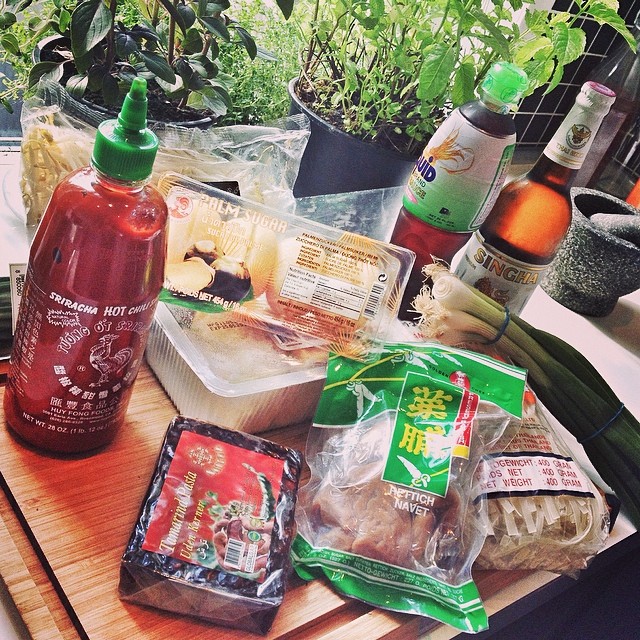
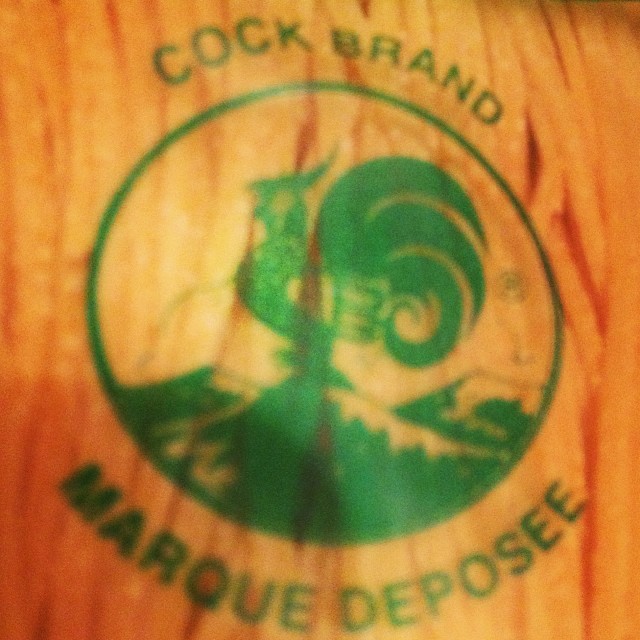

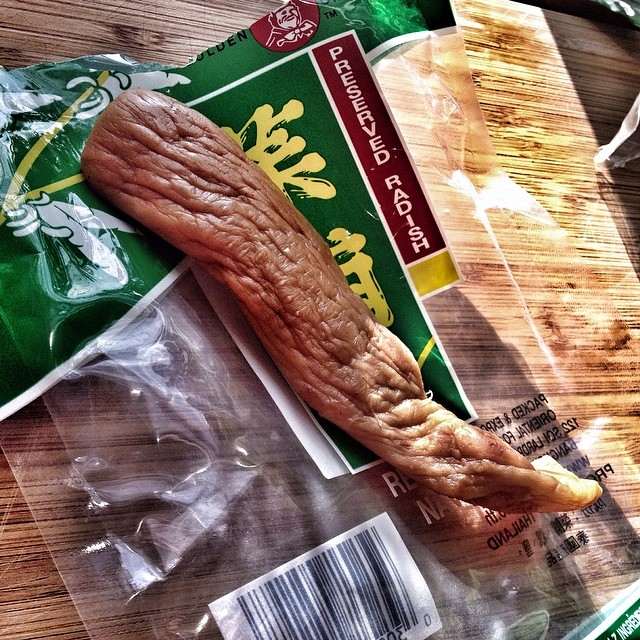
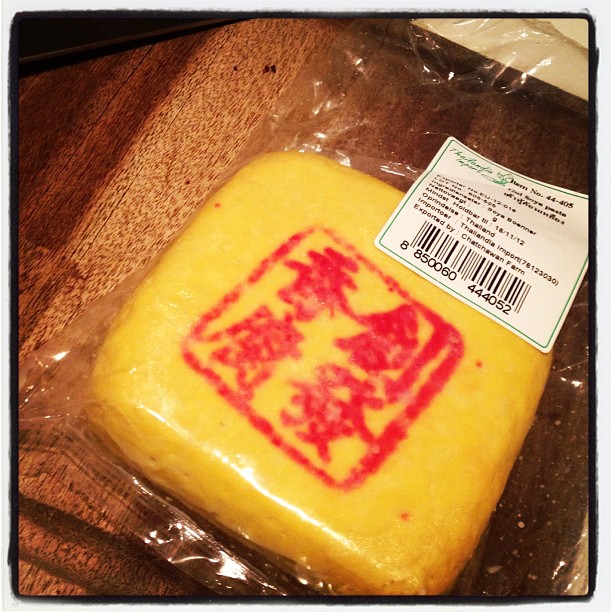
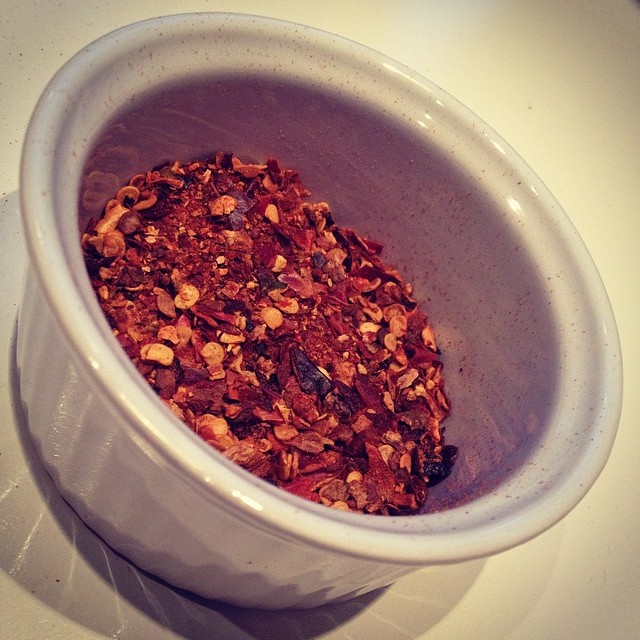
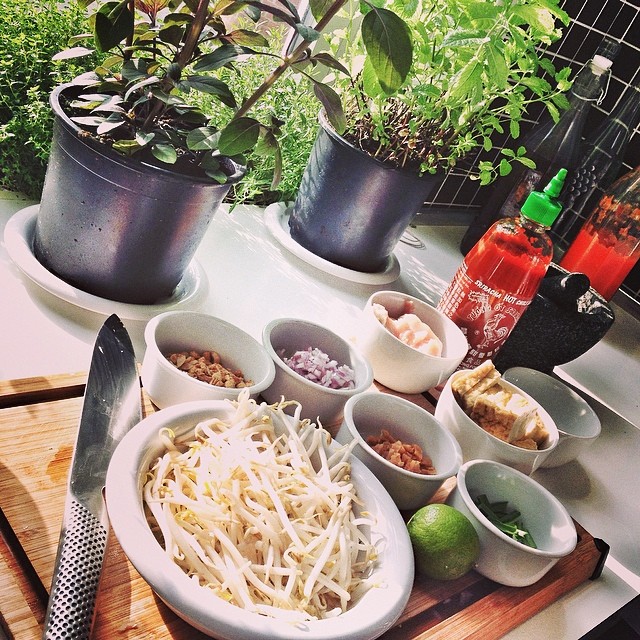

This is an awesome break down! I have gotten on a major Asian kick for some reason and have gone bananas over fish sauce… and yes, that stuff stinks when you’re cooking it and luckily I stuck in there while cooking a stir fry and I wasn’t disappointed in the end!
If you don’t mind me asking, what brand knife are you using there in the picture? I have been looking for a knife that is an all one piece and not just a blade attached to a piece of plastic or wood that just becomes loose over time. Thanks so much Johan!
Haha, yes, fish sauce can be a challenging acquaintance. I find it gets easier with time, but it does have a pretty distinct smell to it… But the flavor, oh God!
Of course I don’t mind, the knife in question is my GLOBAL brand Chef’s knife: http://www.global-knife.com/products/global_g.html
I’ve got a whole line of them and I find them to be simplistic, beautiful, sharp and very well balanced. They’re also rather expensive, but they serve me well and make me happy. They don’t pay me to say this, but really they’re the best I’ve had so far.